
Adaptaciones realizadas habitualmente para apoyar a los estudiantes con características de dislexia
- Subject:
- English Language Arts
- Material Type:
- Reading
- Provider:
- Tennessee Center for the Study and Treatment of Dyslexia
- Date Added:
- 06/19/2024

Adaptaciones realizadas habitualmente para apoyar a los estudiantes con características de dislexia

One way that writers of all kinds begin a piece of writing is by creating a contrast between what has happened in the past and what is happening now. When writers do this, they aren’t trying to write about history, but rather they are beginning by creating context for the ideas they are about to reveal. This little history-corner-moment provides a dynamic beginning in any content area -- from art to economics to ecology!

This guide is organized by commonly experienced challenges (e .g ., lack of modeling) to teachers implementing evidence-based adolescent literacy practices with fidelity. Also provided are an explanation of each challenge and resources from established organizations and research centers that instructional leaders can use to address these challenges .

Students are guided through an informal exploration of nonfiction texts and child-oriented Websites, learning browsing and skimming techniques for the purpose of gathering interesting information.
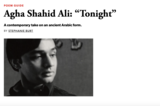
A contemporary take on an ancient Arabic form.

Less can often be more—especially as students explore the theme of a work of literature through analytical writing. Writing haiku offers a student in the final draft stages of a paper an innovative way to determine if the paper says what he/she means it to say. Students can “lose their way” when writing analytical papers, resulting in wordy, tangled papers with the thesis obscured. To alleviate this problem, students create haiku that, in seventeen syllables, encapsulate the heart of the paper. Because of its brevity, haiku promotes clarity of thought. It further challenges students to work on focused revision.
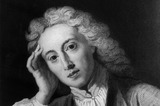
Did the poems of this 18th-century poet prefigure modern hip-hop rivalries?

Students explore their towns' landmarks, symbols, and people; look at brochures and other informational tools; practice writing for a specific audience and revising; and work collaboratively to create a brochure.

Students compare attending a performance at The Globe Theater with attending a modern theater production or movie. They then create a commercial for an Elizabethan audience promoting a modern product.

In this lesson designed for kindergarteners, students experience the alphabet through movement.

This Goshute alphabet (ABC) coloring book is a part of the Native American Indian Literacy Project storybook series for the six main Utah Tribal Nations. There are five stories per Tribe, with a total of 30 booklets, plus an ABC book. The set of Indian Tribal stories may be utilized by elementary classroom teachers to (1) develop an understanding and appreciation of Native American culture and societal contributions (2) provide a genre of text for the application of reading strategies, and (3) facilitate the mastery of various Utah Core Content Curriculum objectives. The Native American Indian Literacy Project was made possible by funds from the Utah State Office of Education (USOE). It is a joint effort of the USOE and San Juan School District Media Center.

Students write original stories using alphabetical order, beginning each page with a new letter, and then illustrate their texts in class or at home with their families.

The traditional autobiography writing project is given a twist as students write alphabiographies - recording an event, person, object, or feeling associated with each letter of the alphabet.

Through a close reading of "Amelia Bedelia", students reread the material to discuss text-dependent questions, promoting deep thinking about the text and its characters.
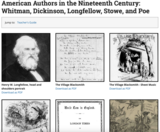
This primary source set includes documents and images from the lives of American authors in the 19th century. A teacher guide is included to assist educators in utilizing the primary sources in their instruction.
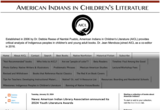
the American Library Association announced its annual book awards. Below a list of the winners of the American Indian Library Association's Youth Literature Awards, given every two years (even-numbered years). Soon, all these books listed below will have the AIYLA seal on them! The photo below is from the AILA website and shows a selection of the books with their seals.

his lesson uses music and art in a vocabulary study of unfamiliar words from the song "America the Beautiful," increasing students' vocabulary while also increasing their knowledge of U.S. geography. A discussion to activate students' prior knowledge about sights and scenery throughout the United States is followed by a read-aloud and introduction to the song "America the Beautiful," which is then sung in each session of the lesson. Students learn the meanings of the song's words through shared reading and the use of context clues and images. Students then use photographs, illustrations, and descriptive language to create a mural shaped like the United States. Finally, through pictures and words, students reflect on what they have learned. This lesson is appropriate and adaptable for any patriotic event or holiday, and many of the vocabulary strategies are adaptable for other texts or word lists, as well.
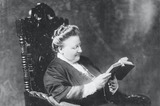
Ezra Pound thought she ruined imagism, but her erotic lyricism turned it into a style all her own.
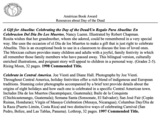
The Américas Award, which began in 1993, was founded by the Consortium of Latin American Studies Programs (CLASP) to encourage and commend authors and illustrators who produce children’s and young adult literature with themes concerning Latin America. More information can be found on the CLASP website (http://claspprograms.org/pages/detail/37). Each year the award names two winners, honorable mentions and commended titles. The books listed in this document are those books which address issues of relevance to teaching about Day of the Dead. Lists of other Américas Award winning books can be found on the CLASP website.

Students create epitaphs for characters from a tragedy, such as "Hamlet".